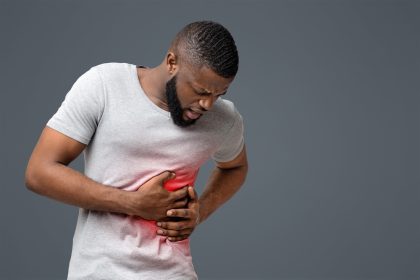Exercise is widely celebrated for its heart-strengthening benefits and ability to regulate cholesterol over time. Yet, it may come as a surprise to learn that for some individuals, physical activity can lead to a short-term rise in cholesterol levels. This unexpected outcome can be confusing—especially for those committed to a new workout routine with health goals in mind.
How exercise affects cholesterol
Cholesterol is a waxy substance found in every cell of your body. It plays a crucial role in producing hormones, vitamin D and substances that help you digest food. While too much cholesterol—particularly low-density lipoprotein (LDL), often referred to as “bad” cholesterol—can contribute to heart disease, high-density lipoprotein (HDL), or “good” cholesterol, helps clear excess cholesterol from your bloodstream.
When you exercise, your body goes through numerous biological shifts. Muscles demand more energy, your heart rate climbs, and hormones surge. These internal adjustments can cause cholesterol levels to fluctuate, particularly in the hours or days following intense or unfamiliar workouts.
Mechanisms behind temporary spikes
Several key factors explain why cholesterol can appear elevated right after exercise:
Mobilization of fat stores
During exercise, especially when it’s vigorous or prolonged, your body taps into stored fats for energy. This release can increase the amount of fat circulating in your bloodstream, including cholesterol.
Increased breakdown of fatty acids
As fatty acids are broken down for fuel, some cholesterol-rich lipoproteins may be released into the blood temporarily. This doesn’t mean your body is producing more cholesterol—it simply reflects the metabolic activity taking place.
Muscle damage and inflammation
Intense workouts can cause micro-tears in muscle fibers. In response, your body activates healing mechanisms, some of which involve transporting lipids and cholesterol to inflamed tissue. Blood tests taken during this window may reflect these shifts.
Timing of blood tests
If a cholesterol test is conducted within 24 to 72 hours after strenuous activity, levels may not accurately reflect your baseline. Medical professionals often recommend avoiding heavy exercise before getting tested to prevent misinterpretation.
Why this shouldn’t discourage your fitness goals
While a temporary increase might be surprising, it is not inherently dangerous. In fact, over time, regular exercise tends to improve your lipid profile by:
- Lowering LDL levels
- Raising HDL levels
- Promoting weight loss
- Improving insulin sensitivity
This pattern holds true for aerobic activities like jogging, swimming and cycling, as well as strength training. What matters most is consistency and balance—developing a routine that supports your cardiovascular health in the long run.
Interpreting cholesterol results accurately
If you notice an uptick in your cholesterol numbers after beginning a workout regimen, here’s what to consider:
Context matters
Look at the full picture of your health. One-off numbers are less important than long-term trends. Doctors assess not only total cholesterol but the ratio of HDL to LDL, and the presence of triglycerides.
Timing is crucial
Avoid testing cholesterol immediately after exercise. Schedule blood tests at least 48 hours after your last workout. Rest and hydration help return your body to baseline conditions, leading to more accurate readings.
Consider multiple factors
Diet, sleep, stress and hydration can all influence cholesterol levels. Even if you exercise regularly, a poor diet or lack of rest can skew your results. Maintaining an overall healthy lifestyle is key.
Diet and recovery in cholesterol management
Exercise is only one part of the equation. Nutrition and recovery are just as important for maintaining healthy cholesterol levels:
- Healthy fats, such as those in avocados, nuts and olive oil, support good cholesterol production
- Soluble fiber, found in oats, legumes and fruits, helps flush excess cholesterol from your system
- Proper hydration ensures efficient circulation and nutrient transport
- Rest and sleep aid in recovery and hormone regulation, both of which impact cholesterol balance
If you’re exercising but not seeing improvements in your bloodwork, it might be time to assess these other areas.
Athletes and cholesterol fluctuations
Elite athletes and fitness enthusiasts may see pronounced fluctuations due to the intensity and frequency of their training. Studies have shown that marathon runners, for example, often experience higher cholesterol readings in the days following a race.
This is especially common when training in fasted states or during long endurance sessions. Their bodies adapt by increasing the circulation of fat-based energy sources, which may include cholesterol-laden particles. It’s a sign of high metabolic turnover—not necessarily a health risk.
For most people, these changes stabilize as the body adapts to the demands of regular exercise.
When to be concerned
In rare cases, elevated cholesterol levels can signal something more serious. If cholesterol remains high after consistent rest periods or begins rising dramatically without an apparent cause, consult your health care provider, reassess medication or supplement interactions, and consider genetic conditions like familial hypercholesterolemia.
Early intervention helps prevent the progression of heart-related diseases. Always keep communication open with your medical team if your numbers don’t improve over time.
The bigger picture
Despite momentary fluctuations, exercise remains a cornerstone of cardiovascular health. It reduces inflammation, supports mental well-being and builds resilience against chronic diseases. The short-term rise in cholesterol is a sign that your body is doing internal work—it’s part of the transformation.
Temporary rises in cholesterol caused by exercise are not signs of failure—they’re signs that your body is adapting, responding and evolving. Understanding how these fluctuations work can give you peace of mind and empower you to stick with your fitnesskjl goals.













